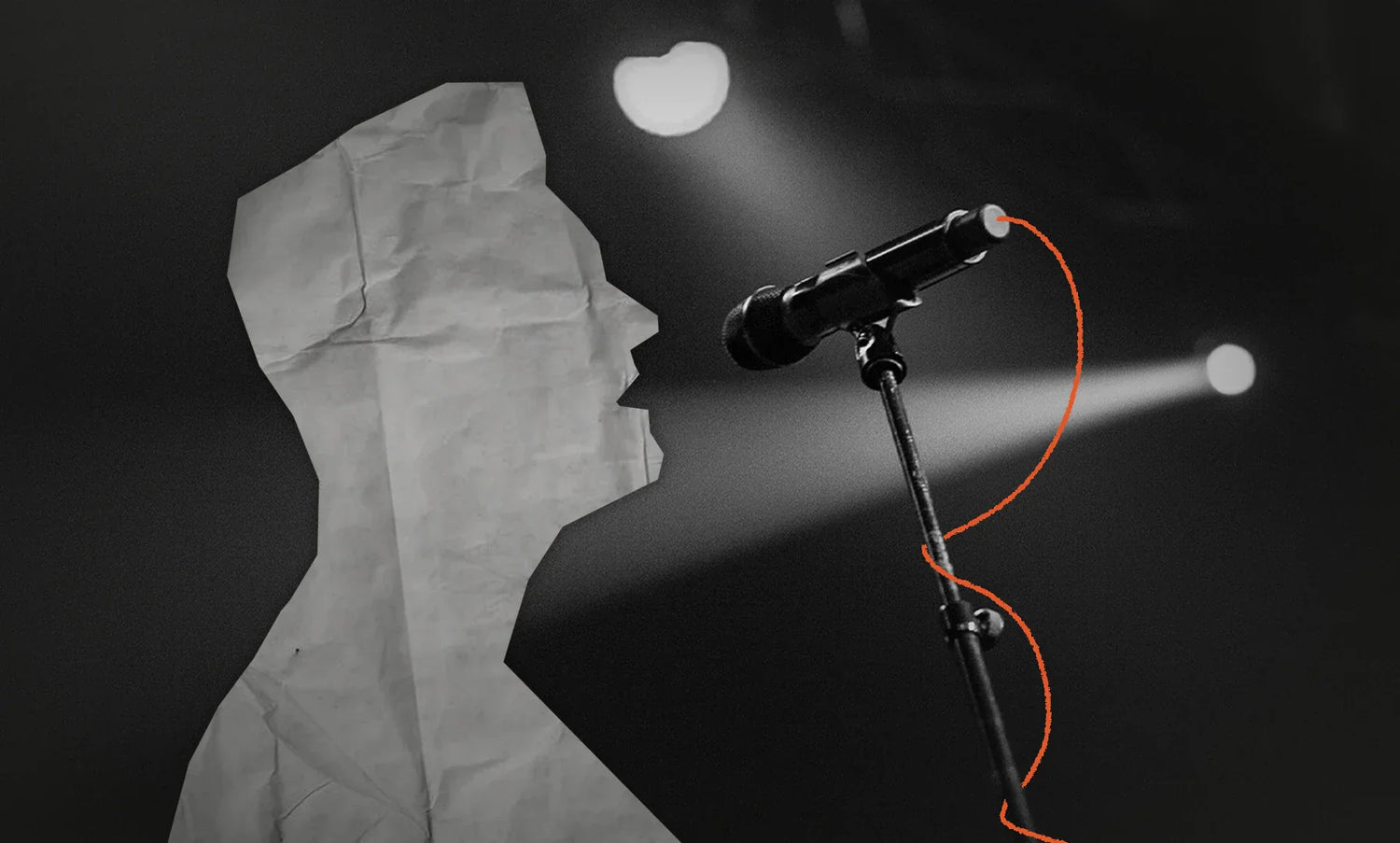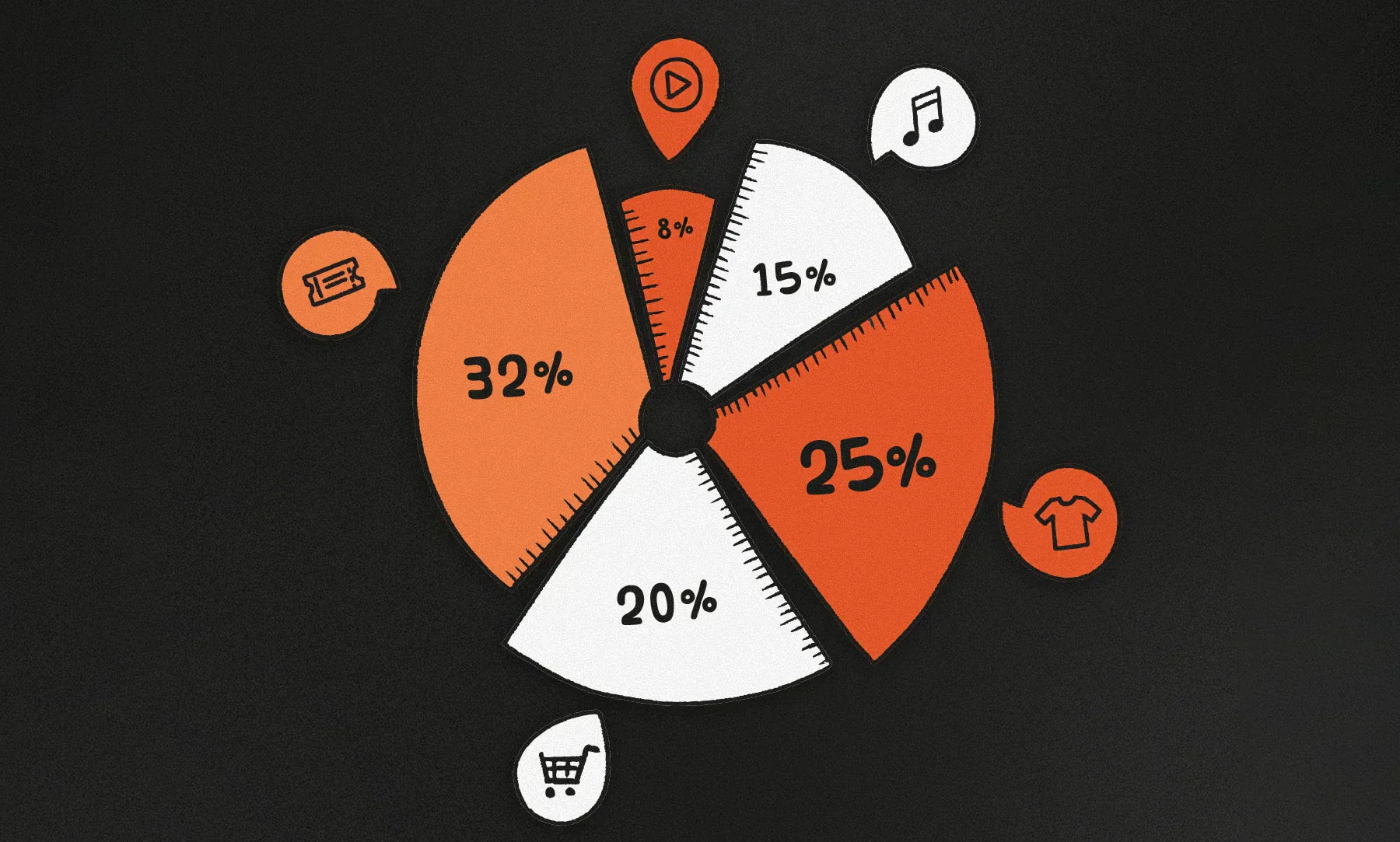You want to play to bigger crowds and see your streams climb? That starts with showing up where fans actually look for live music.
Platforms like Songkick and Bandsintown quietly power the listings and alerts people check before deciding what concerts they want to experience. They also feed into the places your listeners already spend time, including Spotify’s Live Events through approved partners.
The problem is, most independent artists never bother with them. They focus on social posts or ad spend, but skip the simple step that makes their shows discoverable everywhere. And that’s a huge missed opportunity.
Live show data is one of the strongest signals of real-world momentum. The same systems used by big concert promotion companies can work for you too, whether you’re playing an open-mic night, a college festival, or a short regional run.
In this guide, we’ll walk through how the live-show ecosystem works, why it matters for your streams and fan growth, and how to set it up in under an hour. By the end, you’ll know exactly how to turn every gig, no matter the size, into digital momentum that lasts long after the lights go down.
The Real Role Of Concert Promotion Companies
When most artists think of concert promotion companies, they picture the giants like Live Nation or AEG Presents running arena tours and festival circuits.
But the live music ecosystem isn’t that simple. It’s layered. There are national promoters, local collectives booking city venues and events, and now, a growing tier of digital tools that act like micro-promoters for independent artists.
|
Type |
Examples |
|
Major concert promotion companies |
Live Nation, AEG Presents |
|
Mid-tier and local promoters |
Independent venues, festivals, collectives |
|
Digital tools for artists |
Songkick, Bandsintown, DICE, Eventbrite |
Platforms such as Songkick for Artists and Bandsintown for Artists work like a modern DIY promo team. They structure your show information so it’s visible to the algorithms behind concert discovery, ticket links, and Spotify’s Live Events feed. When your listings are connected correctly, your dates don’t just live on a flyer. They appear where fans are already searching for live music.
Someone planning their weekend might scroll through Spotify or Google and find your next show right alongside major tours. The tools are free, the setup is quick, and for independent artists, the visibility can make a real difference.
Common Myths About Songkick And Bandsintown
Myth 1: Nobody uses those sites anymore.
These platforms work quietly in the background of concert discovery. Bandsintown distributes event listings to major platforms like Spotify, Google, Apple Maps, and Shazam, giving you more reach than you’d expect from a free profile.
Myth 2: You have to be touring to use them.
Even a single local show benefits from being listed. Each listing becomes a digital anchor that fans can find, follow, and share. Bandsintown’s alerts and event distribution make small runs discoverable far beyond your social media audience.
Myth 3: Songkick powers Spotify for everyone.
Not anymore. Spotify no longer displays events pulled from Songkick. To appear on your Spotify profile, your show must be listed with an approved ticketing partner or synced through Bandsintown’s integration. Songkick is still valuable for your website widget, search visibility, and fans who use the app, but it no longer feeds into Spotify’s Live Events section.
Why Indie Artists Struggle With Live Promotion
Many artists promote in fragments: a quick Instagram post, a story, maybe a link in bio. The problem is that none of these create structured event data. Without a show listed on Bandsintown or Songkick, your gig is invisible to search engines and streaming platforms. Fans miss it. Local listeners never get notifications.
You also lose a valuable credibility signal that tells algorithms you’re an active artist, not just a profile. When your events are listed in structured form, you become more searchable, more visible, and easier for fans to find across every platform.
Songkick Vs. Bandsintown: What’s The Difference?
Both platforms are free and worth using, but each has its own strengths.
|
Feature |
Songkick for Artists |
Bandsintown for Artists |
|
Spotify pathway |
Not displayed on Spotify |
Integrated with Spotify’s Live Events feed |
|
Distribution |
Strong web presence and website widget |
Distributed to Spotify, Google, Apple Maps, and Shazam |
|
Audience tools |
Follower tracking and in-app audience |
Fan notifications, RSVPs, and location insights |
|
Best for |
SEO, website embeds, and fan browsing |
Direct fan alerts and Spotify visibility |
For most independent artists, the best approach is to use both platforms, keeping listings clean and consistent. Use Bandsintown to reach fans through Spotify’s Live Events and automated alerts, and keep Songkick active for your website widget, SEO benefits, and fans who still follow shows through the app. Together, they expand your reach and make your live activity visible across every major discovery channel.
The Hidden Link Between Live Shows And Spotify Growth
Consistent event listings support growth loops. Fans stream you before and after a show, and Spotify detects location-based engagement. The next time you announce a date in that city, more fans are primed to see it. While Spotify does not publish a direct “touring boosts ranking” rule, Live Events features exist to bridge streams and tickets, which is exactly the loop you want to build.
Here’s what that means in plain terms:
- You add a show in Bandsintown and list tickets with an approved partner.
- The event appears on your Spotify profile and in fans’ Live Events feeds.
- Local listeners stream you while deciding whether to attend.
- Post-show, streaming often spikes in that city.
- The next show benefits from the activity you just created.
How to use Songkick and Bandsintown effectively
If you are new to these tools, start here.
Step 1: Claim your artist pages
Verify your profiles on Songkick Tourbox and Bandsintown for Artists. This prevents duplicate listings and gives you full control over your event information.
Step 2: Connect the Spotify pathway
In Bandsintown, add your Spotify artist URL. Once connected, your shows will appear on your Spotify profile and in fans’ Live Events feeds, usually within 24 hours.
Step 3: Add events early
Post as soon as dates are confirmed. Early listings enable timely geo-alerts and discovery. Spotify notes that new concerts typically appear within about a day when they’re listed via partners.
Step 4: Make events searchable
Use the correct venue name, full city and province or state, and include ticket links. Think about what words fans would actually search for and write your event title accordingly (in other words, treat it like a headline a fan would actually tap).
Step 5: Link listening
Include a short set preview playlist or featured track when you promote your show. It gives fans a reason to stream your music before they see you live and helps build a connection between your stage and your streams.
Promote Your Music For Live Shows
Once your listings are live, it’s time to amplify them. You do not need a massive budget to make an impact. A few smart moves can extend your reach and build momentum.
Share from the source.
Use Bandsintown’s built-in sharing tools instead of manually copying links. They automatically include event metadata, which keeps your listings accurate across social platforms.
Embed a widget.
Add Songkick’s widget to your website so your tour dates update automatically. It saves you time and keeps everything in sync as you add new shows.
Spend on ads strategically.
For small or mid-sized shows, organic channels often outperform paid ads. Geo-alerts, email updates, and consistent listings usually do more for discovery than a one-off ad buy from a concert promotion company. However, if you’re not great with word-of-mouth or you want to let a larger audience know you’re in town, targeted Meta ads can be pretty effective. The algorithm may not guarantee your post lands on your followers’ feeds, but a targeting campaign increases that chance.
Leverage your Spotify data.
Check your top cities on Spotify for Artists and use that information to plan future gigs or pitch venues. Real listener data shows promoters that there is already an audience waiting.
Track what moves tickets.
Watch how RSVPs, clicks, and ticket sales change over time. If engagement looks strong but attendance is low, test earlier announcements, stronger visuals, or bundled offers like discounted merch or VIP upgrades.
Your live show is also digital content. The listing itself, a short teaser clip, or a post-show recap all signal activity and growth. Every new piece reinforces that you are active, consistent, and worth following.
Concert Promotion Companies vs. DIY Tools
So, when should you bring in professional concert promotion companies instead of doing everything yourself? It depends on scale.
If you’re selling out 100 to 300-capacity rooms, DIY tools like Songkick, Bandsintown, and smart social campaigns can handle most of your discovery and conversion. Once you start reaching 500-cap venues or multi-city tours, partnering with a local or regional promoter becomes more valuable. They bring press coverage, radio connections, and venue relationships you can’t easily build alone.
The hybrid model works best. You manage the digital infrastructure (listings, data, and fan engagement) while promoters handle local logistics and earned media. Together, that balance turns attention into momentum.
Turning Shows Into Long-Term Growth
Every show you play can become part of your marketing system if you plan it right. To recap, here’s what to do and when.
Before the show:
List your event early on Bandsintown, check your ticket links, and make sure your tour schedule is embedded on your website. Don’t forget to lean into your organic socials and run meta ads, if you have the budget.
During the show:
Capture short clips or crowd moments that you can share later. Fans love seeing real performances, and that content continues to work for you long after the night ends.
After the show:
Thank your audience, post highlights, and encourage them to follow you on Spotify so they see your next date in their Live Events feed.
Each show you document teaches the platforms to recognize your consistency. That pattern compounds over time, strengthening your visibility both online and off.
Building Real Momentum For Live Music Marketing
Every event you list is a signal. Each RSVP, ticket sale, or fan click tells platforms and promoters that there’s real interest in your music. When you connect Bandsintown, approved ticketing partners, and your Spotify profile, you’re not just managing gigs, you’re creating a live map of demand.
That map helps algorithms, booking agents, and industry partners understand where you’re growing and where to invest next.
If you need help getting new listeners for your upcoming gigs, music promotion services can get your foot in the door. We offer organic playlisting and monthly listeners services. Get the momentum you need and start playing more shows.

